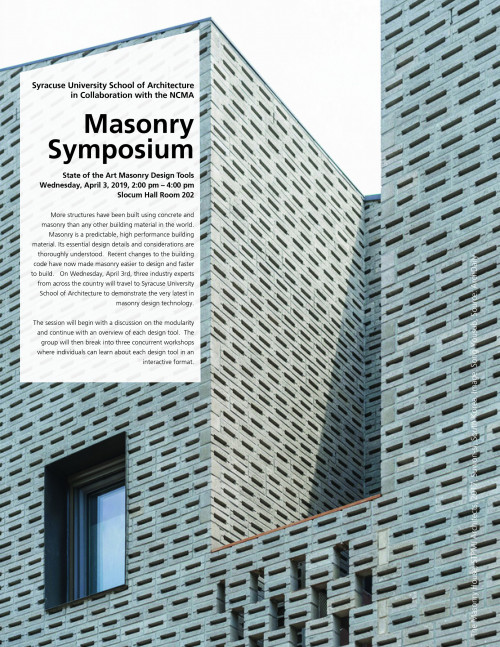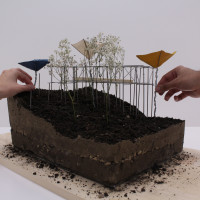
The session will begin with a discussion on the modularity and continue with an overview of each design tool. The group will then break into three concurrent workshops where individuals can learn about each design tool in an interactive format.
Introductions by Roger Hubeli and Julie Larsen
School of Architecture, Syracuse University
Modularity as a broader concept
The close relation between parametric design and modularity allow for new formal expressions that were unimaginable just two decades ago. These new tools question the formal and technical basis of architectural design and construction. Most currently this is further enhanced by the rapid development of new building materials and fabrication technologies, making it possible to rethink modularity through advanced prefabrication of building elements and integrated building components.
Tom Cuneio
Developer of Masonry iQ
St. Louis, Missouri
Masonry iQ automates many of the time consuming detailing efforts required by architects to design with masonry. Custom patterns, accurate elevations, wall sections, control joint placement, bond beam placement and other critical details are all handled in a central masonry data model. Masonry modeling technology like clash detection, coordination, laser scanning and production order staging will be demonstrated. During the workshop sessions individuals will have an opportunity to experience masonry in VR (virtual reality). If you’ve never worn VR gear in a masonry environment, don’t miss this session.
Russ Peterson
Developer of Direct Design Software
Bozeman, Montana
The National Concrete Masonry Association’s Education and Research Foundation initiated a decade of testing that resulted in massive changes to masonry in the International Building Code. Unit Strength was recalibrated with a 33% increase in the strength of masonry; this can potentially reduce the reinforcement in concrete masonry walls by 50%. Masons can build walls faster using significantly less labor and material.
Working with an NCMA Foundation Grant, Russ Peterson developed Direct Design Software. Direct Design is an inexpensive state-of-the-art structural masonry design program that makes masonry design faster and easier. What previously took an engineer several days to design, now can be accomplished in several hours. Because it incorporates the new IBC masonry code provisions, the potential cost of the masonry structure could be significantly less when Direct Design is used.
Direct Design Software will be able to interact with Masonry IQ in Revit. Buildings can be drawn in Revit, and then exported into Direct Design. After the structural masonry design is completed, the file will be integrated back into the Revit model of the building. This is all part of ‘The Building Information Modeling for Masonry’.
Nick Lang P.E.
Vice President, National Concrete Masonry Association
Herndon, Virginia
Concrete masonry offers great structural benefits, has a long service life, and is an important thermal mass material for energy code compliance and passive system applications.
Does the public truly understand the benefits associated with thermal mass in all climate zones? Why does the International Energy Conservation Code allow mass systems to comply with over 40% less insulation than light weight systems? This presentation will answer these questions and demonstrate how easy it is to use compliance software to satisfy your energy performance needs.
This event is sponsored by the Upstate New York Mason Contractors Association of America, Upstate Masonry Institute, and New York State Concrete Masonry Association











